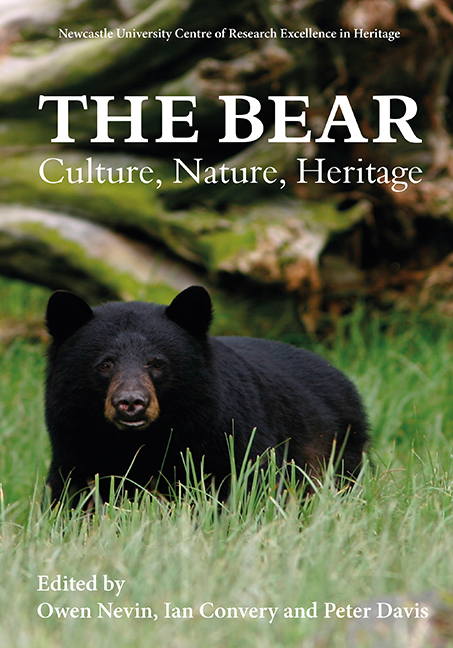Book contents
- Frontmatter
- Contents
- List of Illustrations
- Acknowledgments
- List of Abbreviations
- Foreword: The Bear: A Cultural and Natural Heritage
- Introduction: What is a Bear?
- Bear-People Interactions
- Bears in the Public Gaze
- Bear Biology, Management and Conservation
- Afterword: “It's Me Bear”: Reflections on a Unique Career Working with Bears
- List of Contributors
- Index
- Previous titles
15 - Living with Bears in Europe
Published online by Cambridge University Press: 21 March 2020
- Frontmatter
- Contents
- List of Illustrations
- Acknowledgments
- List of Abbreviations
- Foreword: The Bear: A Cultural and Natural Heritage
- Introduction: What is a Bear?
- Bear-People Interactions
- Bears in the Public Gaze
- Bear Biology, Management and Conservation
- Afterword: “It's Me Bear”: Reflections on a Unique Career Working with Bears
- List of Contributors
- Index
- Previous titles
Summary
Europe is densely populated and extensive wilderness areas are almost non-existent. Nevertheless, we share the continent with roughly 17,000 brown bears (Ursus arctos) in what is considered an example of the coexistence model. In contrast to the separation model, where bears and people are kept apart, the coexistence model promotes sharing of the same landscape. However, coexistence between people and bears is challenging and often results in a variety of conflicts: from damage caused to human property to direct threats to human safety that lead to the killing of bears. Several factors affect the probability of these human-bear conflicts and a good understanding of the drivers behind the development of ‘problem bear’ behaviour is essential when designing effective management measures. The toolbox of human-bear conflict management includes practices such as livestock guarding dogs, electric fences and aversive conditioning of problem bears. Largely unique to Europe is the use of artificial diversionary feeding of brown bears, whereby food is placed in remote areas in order to keep bears away from human settlements. Despite being practised for a long time in many countries, it is only recently that the broader spectrum of positive and negative consequences of this controversial measure has been understood. Public opinion is an important issue in the use of some conflict prevention measures; in some cases, local people react against lethal methods, especially where bears occur in small numbers. Recent advances in the science of human-bear conflicts offer a promise of continuing coexistence between people and brown bears, which are making a slow but steady return to many parts of Europe where they have been exterminated in the past. This also brings potential benefits that are associated with bear presence, such as ecotourism and ecosystem services provided by the bears.
DECLINE AND RECOVERY OF THE LARGEST CARNIVORE IN EUROPE
After the extinction of the cave bear (Ursus spelaeus s. lat.) and retreat of the polar bear (Ursus maritimus) to the north, brown bears remained the only bear species extant in Europe since the end of the last glaciation. In historic times, brown bears roamed throughout the European continent, including Britain, but with the increase in human population and growing pressure on the environment and wildlife populations, brown bear range also gradually decreased.
- Type
- Chapter
- Information
- The Bear: Culture, Nature, Heritage , pp. 187 - 198Publisher: Boydell & BrewerPrint publication year: 2019

